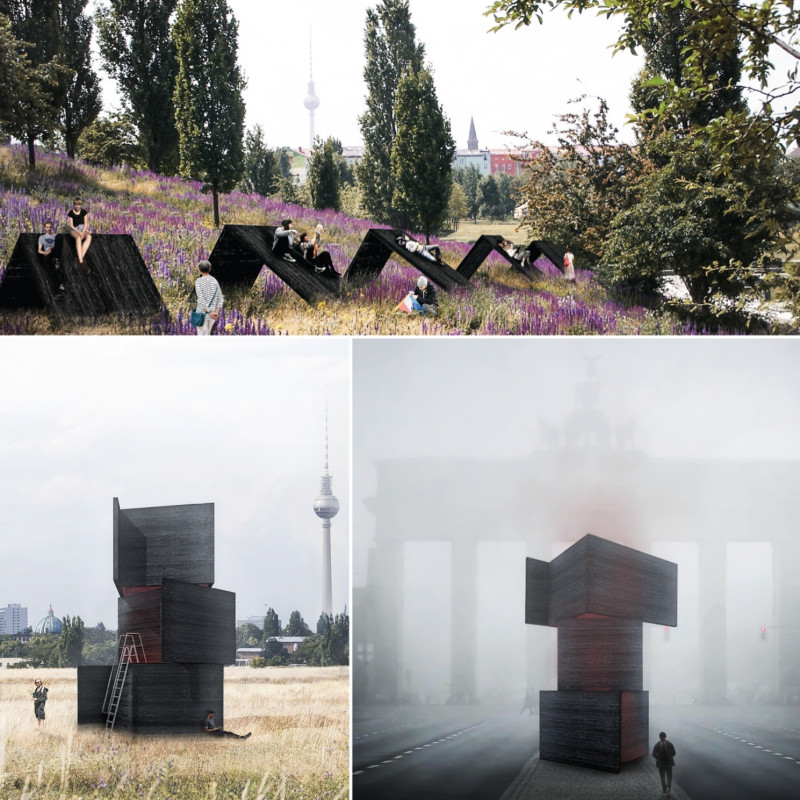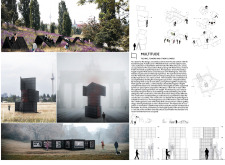5 key facts about this project
The project explores the development of club culture in Berlin, focusing on the changes that took place after the fall of the Berlin Wall. Situated within a setting marked by the contrast between West and East Berlin, it captures themes of discovery and occupation. The design aims to create a space that reflects the fleeting nature of urban nightlife and encourages communal interactions.
Modular Strategy
A modular approach forms the foundation of the design, dividing the rectangular space into several L-shaped components. These modules are carefully stacked, joined, and arranged against one another to create a vertical structure. This composition conveys a sense of fragility and impermanence, echoing the temporary essence of the nightlife culture. The arrangement not only adds visual interest but also allows for flexible use.
Material and Construction
Wood is the main material used in the construction, specifically in the form of L-shaped elements that overlap. This material choice emphasizes the idea of fragility, enabling a more personal interaction between users and the space. The wooden pieces rely on their own weight and arrangement for stability. This reliance creates a play of light and shadow that adds depth to the spatial experience, enriching the atmosphere.
User Engagement
The design places a strong emphasis on adaptability, allowing users to assemble and disassemble parts of the structure as needed. This feature turns the space from a uniform techno venue into a versatile environment, where it can serve as an outdoor gallery or a comfortable social area. The flexibility encourages meaningful interactions, enhancing the experience of being in the space.
Notable Features
One key aspect of the design is a ladder that emphasizes movement within the environment. This element serves both practical and symbolic functions, inviting users to engage with the architecture in a dynamic way. Additionally, a controlled burning process is applied to the wooden L's, creating charred surfaces that convey a sense of vacancy and the potential for future occupation. This detail enriches the overall sensory experience, leaving a lasting impression.



















































